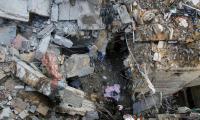Imagine a situation where just over 30 years from now, Pakistan’s population as a country has grown to 403 million. How are we to sustain these vast numbers? How are we to feed them, provide them with water and the other basic needs of life? These are questions Pakistan and its policy planners should be pondering very seriously. According to a new UN report released last week, Pakistan is one of the nine countries in the world which will house more than half the world’s population by 2050. These countries include impoverished India and Nigeria as well as the US. The pattern is already in place with the populations of both Pakistan and Nigeria having doubled in size between 1990 and 2019.
Pakistan is today the fifth most populous country in the world, having moved up from eighth place, and Nigeria from 10th to seventh place. The report points to nations which have succeeded in curbing destructive population growth. China is among the best examples, with an expected population drop of 2.2 percent by 2050. On the whole, there will be countries, most of them in Europe, where deaths will outpace new births. Overall, the global fertility rate is expected to fall to 2.2 in 2050. A minimum of 2.1 births per woman is needed to ensure generations are replaced and to avoid long-term decline in population.
The discrepancy between global figures and our own highlights the problems of a world in which there is uneven distribution of wealth and of control over resources, control over reproduction and, consequently, control over life. Pakistan, with a fertility rate of 3.48, is currently one of the nations in the world registering the most rapid growth in population size. This is obviously not good news. Neither is the disproportionate scattering of population in the years ahead. The UN report sends out an important warning. The world needs to act collectively to avoid the pitfalls of uneven population growth. Mechanisms to ensure this need to be found and those of us who live in parts of the world where the population continues to multiply without check must consider what this means for our society, environment and our territory as a whole.
Maximum temperature for May is 48.1 degrees Celsius, with a humidity ratio of 71.72 per cent
Initially about terrorism in the country, the press talk very quickly turned to the May 9, 2023 riots whose...
Supreme Court has suspended Peshawar High Court’s verdict on reserved seats denied to SIC-PTI combine
We are reminded once again of flawed accountability process that has been practised in country for decades
Representational image of a person using a laptop. — AFP/FileSuch is the scepticism regarding any Pakistani...
Federal Law Minister Azam Nazeer Tarar addressing a press conference. — APP/FileReforms seem to be on the...







